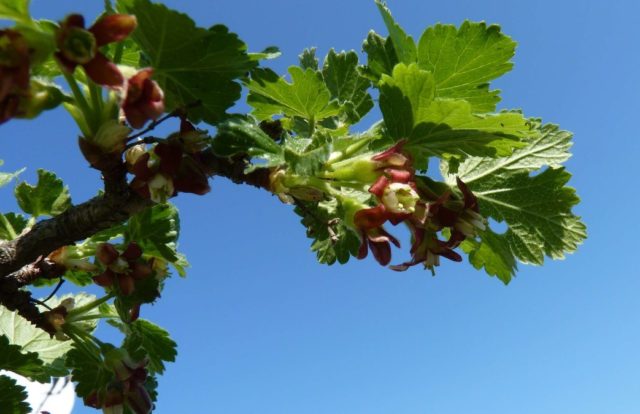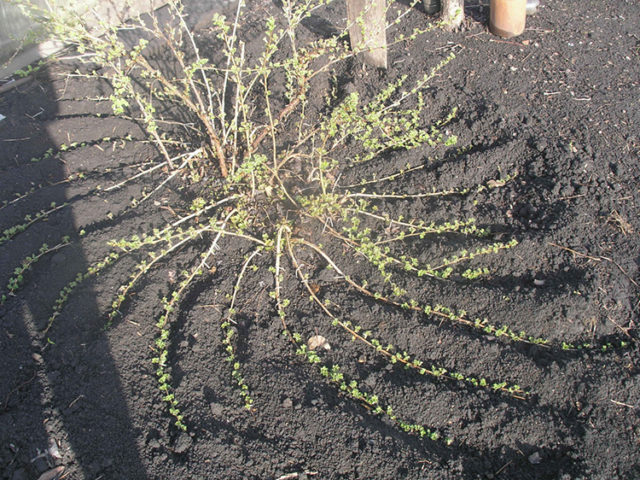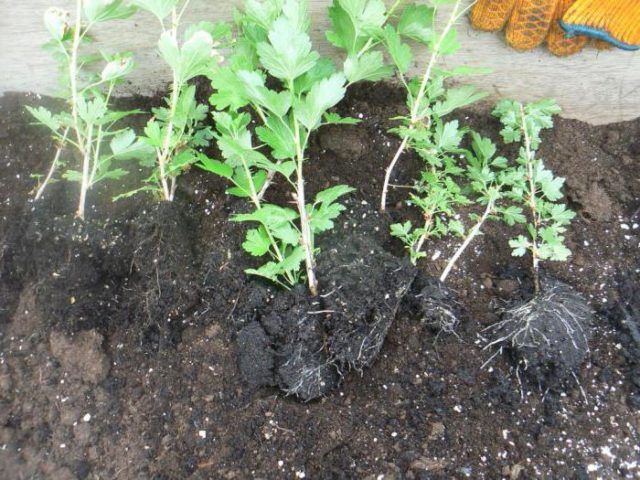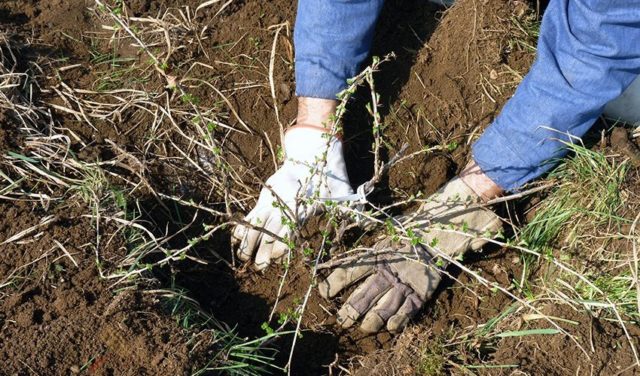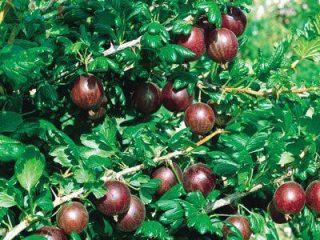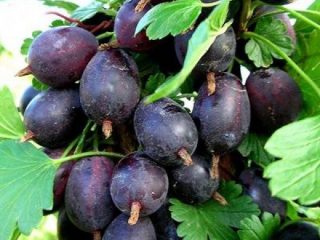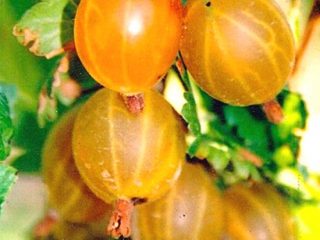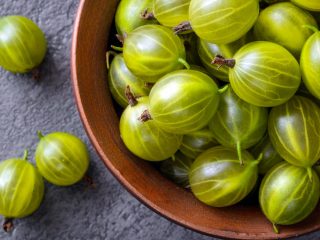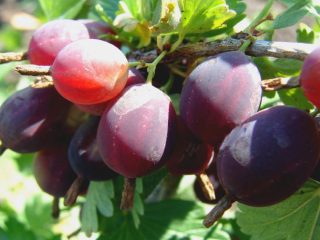Content
English yellow gooseberry is an unpretentious variety that can adapt to almost any climatic conditions. If you learn how to properly cultivate this crop, you can get abundant harvests of sweet berries. In Russia, this variety can be grown in the south and central regions.
Description of the gooseberry variety English yellow
This is a slightly spreading shrub with erect shoots no more than 1.5 m high. They are covered with dark gray bark, which turns brown in plants older than 2 years. The shoots are thin, sparsely covered with soft, long, single thorns.
The leaves are medium-sized, up to 3 cm in length and width, dark, green, wrinkled, leathery and acquire a dark purple hue at the end of summer.
English yellow gooseberries bloom at the end of May with small, narrow flowers up to 1 cm in length. Their color is yellowish-white.
The yellow English gooseberry variety does not need additional pollinators; it is self-fertile. The crop's shedding rate is low; fully ripe berries will remain hanging on the shoots until harvest.
English gooseberries grow well and bear fruit in the southern and central regions, in the northern and eastern regions - they need shelter for the winter and bear fruit poorly.
Drought resistance, frost resistance
The variety is winter-hardy, not afraid of frost, and needs shelter in regions with cold, long, little snowy winters. Tolerates snowy winters with frosts down to -20°C. The crop does not need frequent watering, tolerates drought well, and often suffers from excess moisture.
Fruiting, productivity
Bright yellow berries, covered with soft fluff, weigh at least 4 g, sometimes they can reach 7 g. At the stage of full ripeness, they acquire a rich amber color with a glossy sheen.
Final ripening occurs in mid-July. The skin of the fruit is not hard; it covers the yellow, juicy and sweet flesh of the English gooseberry. The aroma of the fruits is weak, but they have a good dessert taste.
The yield of the variety is high and stable. The berries ripen uniformly and evenly, harvesting occurs in 2 passes. Every year, farmers, subject to the rules of agricultural technology, collect up to 1 bucket of ripe berries from one English gooseberry bush.
Yellow gooseberries have a high shelf life, they can be easily transported, and they retain their presentation for a long time during the journey. The fruits are not subject to baking in the sun; they retain their sweet and sour taste even when exposed to direct sunlight for a long time.
English yellow gooseberries are used to make amber dessert wine.Also, the fruits of yellow gooseberries are consumed fresh, as they have a pleasant taste.
Advantages and disadvantages
Among the negative qualities of the English variety are its weak resistance to spheroteka and cracking of the skin of the berries with a prolonged excess of moisture.
Advantages of the variety:
- stable, high yield;
- pleasant dessert taste;
- long shelf life;
- presentable presentation;
- the ability of fruits to maintain integrity during transportation;
- resistance to most garden diseases;
- compact dimensions of the bush.
Judging by the description of the variety, the yellow English gooseberry has many more advantages than disadvantages, thanks to which it has long become a favorite crop of amateur gardeners.
Features of reproduction
Yellow English gooseberries can be propagated in several ways: cuttings, layering, and dividing the bush.
Gooseberry bushes older than 3 years are propagated by horizontal layering. More than 5 young seedlings can be obtained from one mother plant. They will not lose the varietal qualities of the mother plant.
Cuttings are also effective for propagating yellow English gooseberries. To obtain productive cuttings, mature shoots covered with woody bark are cut off. Then they are divided into several parts and germinated. With this method of propagation, you can obtain an unlimited number of young seedlings.
You can divide the bush in autumn or early spring into 2-3 parts. The separated plants are rooted and their survival rate is quite high.
Each of these methods is effective and allows you to preserve the varietal characteristics of the mother plant.
Planting and care
English yellow gooseberries are planted in the spring (late March), as soon as the snow melts. You can root the seedlings at the end of September before the first frost.
For planting, choose loose, fertile soil (chernozem); loamy soil is also suitable. The culture does not tolerate acidic soils (the acidity level must be neutral). This variety cannot be planted in soil where groundwater lies close to the surface. For planting, choose open areas that are well lit by the sun, but there should be no drafts.
A month before planting English gooseberries, the soil is dug up with rotted manure and wood ash. Immediately before rooting, add 1 tbsp to each hole. l. superphosphate mixed with turf soil.
Seedlings older than 2 years are suitable for planting. They must have at least 2 strong, woody shoots covered with bark. It should be smooth and solid, there should be no cracks or damage. The rhizome should be well branched, the shoots are strong, thick, and yellow in color.
Landing algorithm:
- Dig a planting hole measuring 50x50 cm.
- A third of the hole is filled with earth mixed with 1 tbsp. l. complex mineral fertilizer, form a small hill from it.
- A seedling is placed in the center of the resulting hill, the roots are straightened, they should lie freely on the hill.
- The root collar is left flush with the soil or 1 cm above it; it should not be deepened.
- The rhizome is covered with loose soil and compacted.
- The plant is watered abundantly.
- After moistening the soil, it is mulched, and the shoots are cut off at bud level 6 from the base of the bush.
A week later, the bush is watered abundantly again, and the soil is mulched with sawdust or wood chips.
Growing rules
English yellow gooseberries require autumn or spring pruning. In autumn, the procedure is carried out after the leaves fall, in spring - before the buds swell.
The plant of the first year of life is cut by a third. Leave shoots above 4 or 5 buds. The root shoots are removed, leaving the strongest pair. In a similar way, the plant is pruned up to 7 years. Then you should carry out rejuvenating pruning of the bush: completely remove all old, woody shoots. New branches are cut by a third, leaving a shoot no higher than the 5th bud.
For a plant younger than 3 years old, 2 buckets of water are enough; for older shrubs, take 3-4 buckets of water.
Yellow English gooseberries are watered 3 times a year:
- at the end of May or beginning of June;
- in the middle of July;
- at the end of September (there should not be frost yet).
This gooseberry variety does not need more frequent watering.
Young plants under 3 years old are not fed. More mature gooseberries are fertilized 3 times a year.
In April, before the buds bloom, ammonium nitrate is added to the soil around the base of the gooseberry.
As soon as the English yellow gooseberry fades, it is watered with a superphosphate solution.
After the leaves fall, at least 4 kg of rotted manure is applied under each bush. The soil is carefully dug up with it.
In order for the gooseberry to receive as much sunlight as possible, its shoots are tied to a trellis in the form of a fan.To do this, the branches of the bush are shortened to 60 cm and tied in a circle to a support.
To prevent rodents from damaging the English yellow gooseberry bushes, the tree trunk circle is carefully dug up and the weeds are removed. This will destroy the pest holes. In late autumn, shrubs of this variety are covered with spruce branches. They will protect the gooseberries from rodents.
For the winter, shoots of English yellow gooseberries are tied with twine into one bunch and bent to the ground. Fir branches or boards are laid on top, setting them up as a hut. Any covering material is thrown over such a frame and secured.
Pests and diseases
English yellow gooseberries can suffer from aphids, spider mites, and moths. For prevention, the shrub is treated with Karbofos in early spring. In autumn, fallen leaves and dead parts of the plant are destroyed. In summer, insecticide treatment can be repeated.
This variety is resistant to diseases, but may suffer from spheroteca (powdery mildew). To prevent the disease, gooseberries are treated with Nitrafen solution in March or April, before the buds open. After pruning, the shoots of the bush are treated with Bordeaux mixture (1%), the soil is dug up after each watering, and weeds and fallen leaves are removed in the fall.
Conclusion
English yellow gooseberries are an unpretentious fruit and berry crop characterized by high yields. The fruits of the variety are distinguished by good taste and ability to be stored for a long time. If you follow all the rules for growing this crop, in mid-summer you can get up to 15 kg of sweet, amber berries from one bush.
